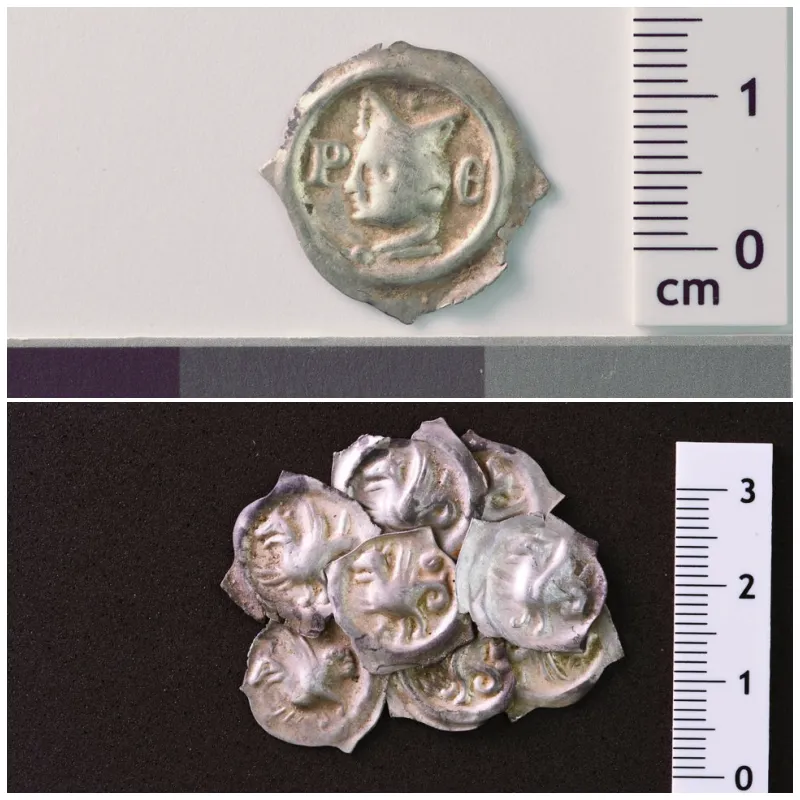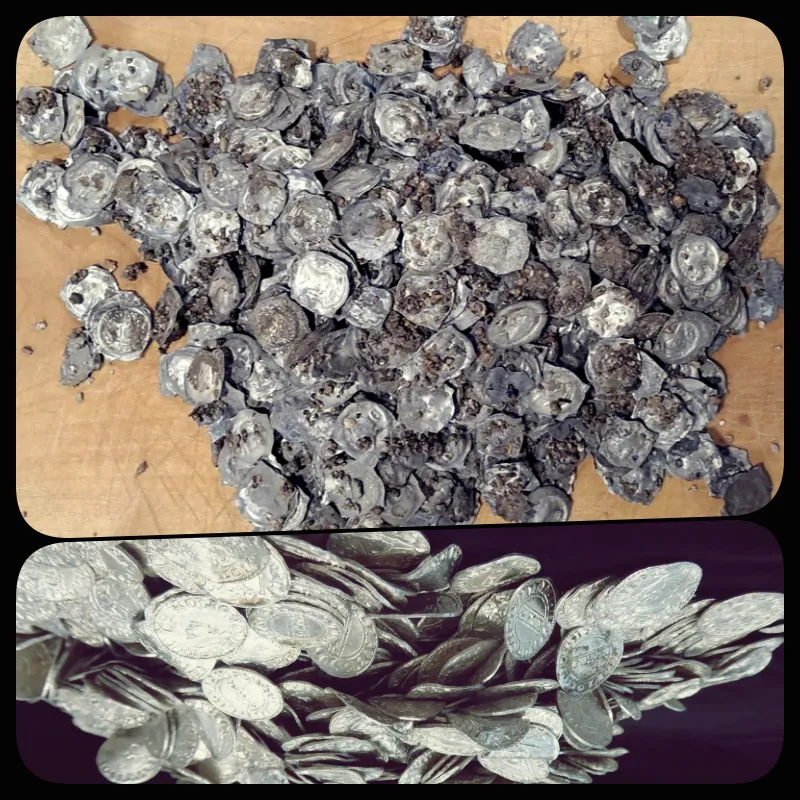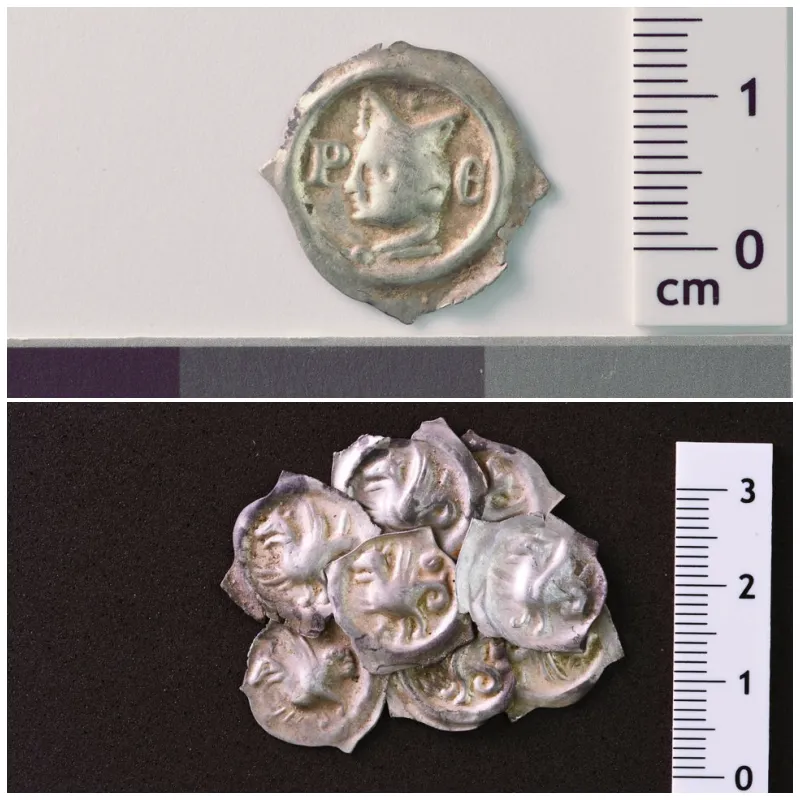Medieval Treasure Trove Uncovered in Germany: 1,500 Silver Coins Reveal Glottertal’s Rich Mining History
“A remarkable discovery in Germany’s Black Forest uncovers over 1,500 medieval silver coins, offering a glimpse into the region’s mining and minting trades from 650 years ago”
Archaeologists in Germany have made a significant discovery, unearthing more than 1,500 medieval silver coins in the Black Forest. This remarkable find occurred after a local resident stumbled upon what appeared to be “small metal plates” while digging during a construction project.

“This is the most significant treasure discovery in the Freiburg region since 1949,” said Andreas Haasis-Berner, an archaeologist with the State Office for Monument Preservation in Stuttgart, in an email to Live Science. The treasure was discovered in May, as workers were laying pipes near a swimming pool in Glottertal, a picturesque municipality nestled in the Black Forest mountains, just 10 kilometers northeast of Freiburg.
The find provides crucial insights into the mining and minting activities that took place in the area around 650 years ago. Glottertal, known for its beautiful valleys and dark pine forests, was a key mining hub for the dukes of Freiburg during the medieval period.
“Glottertal was one of the most important mining areas for the dukes of Freiburg,” explained Haasis-Berner. “The site where the coins were found was a central settlement area for miners who extracted valuable metals such as silver.”
The discovery was made when the resident returned to the site the next morning with his wife, who then uncovered a large quantity of coins. Shortly after, Haasis-Berner and his team arrived and unearthed around 1,000 coins. Despite challenging weather conditions with rain and knee-deep mud, the team managed to recover an additional 500 to 600 coins using metal detectors.

Experts believe the coins were minted in the 1320s, primarily in regions that are now part of Germany, Switzerland, and France. At the time of minting, the coins could have purchased approximately 150 sheep, highlighting their significant value.
This discovery adds to four similar coin hoards found in the greater region, dating back to the same period. “These treasures allow us to understand which coins were commonly circulated,” Haasis-Berner noted.
The evaluation of this coin hoard will offer valuable insights into the circulation of coins in Breisgau, the minting activities, the silver trade, and the mining operations in Glottertal during the medieval period. This discovery not only enriches our understanding of the region’s history but also sheds light on its economic activities centuries ago.









Post Comment